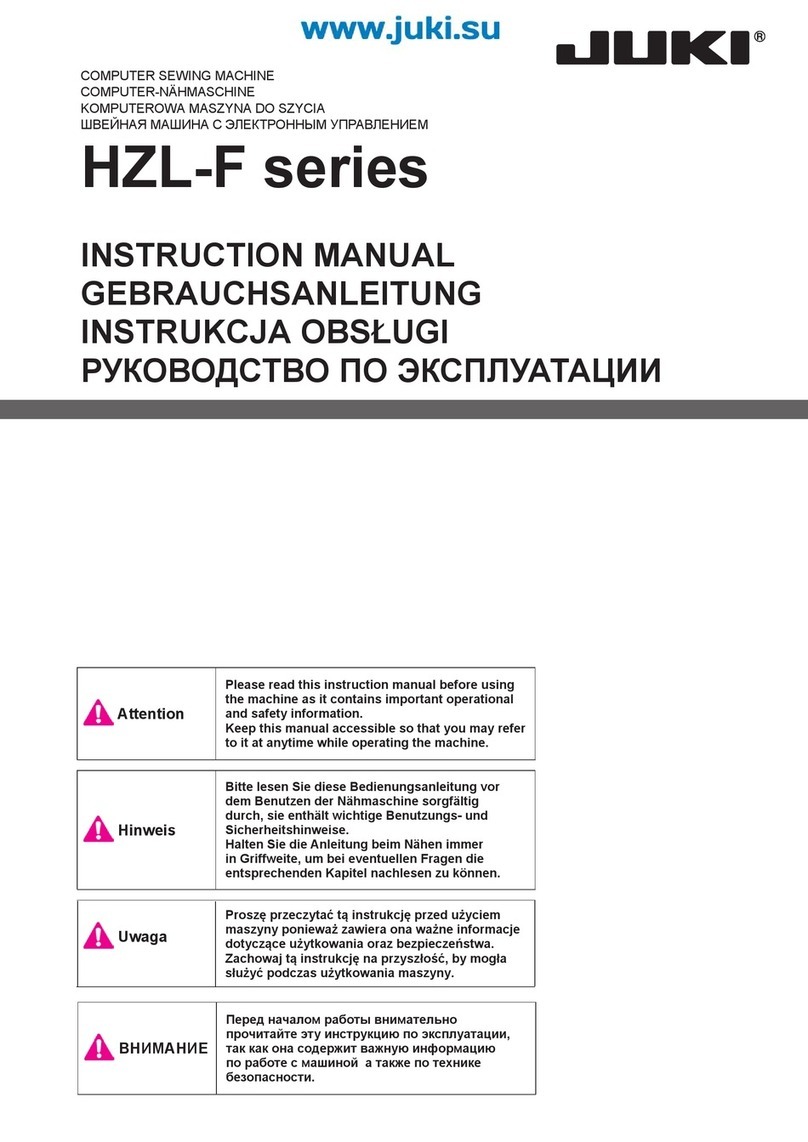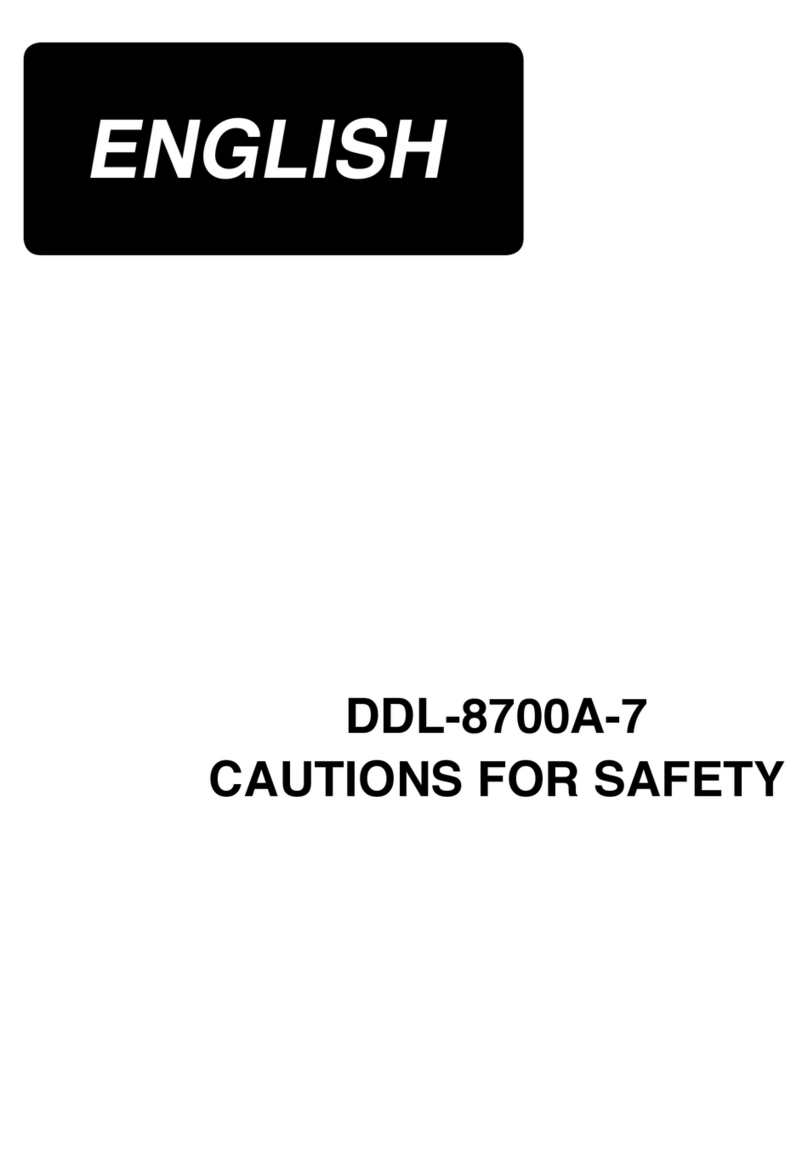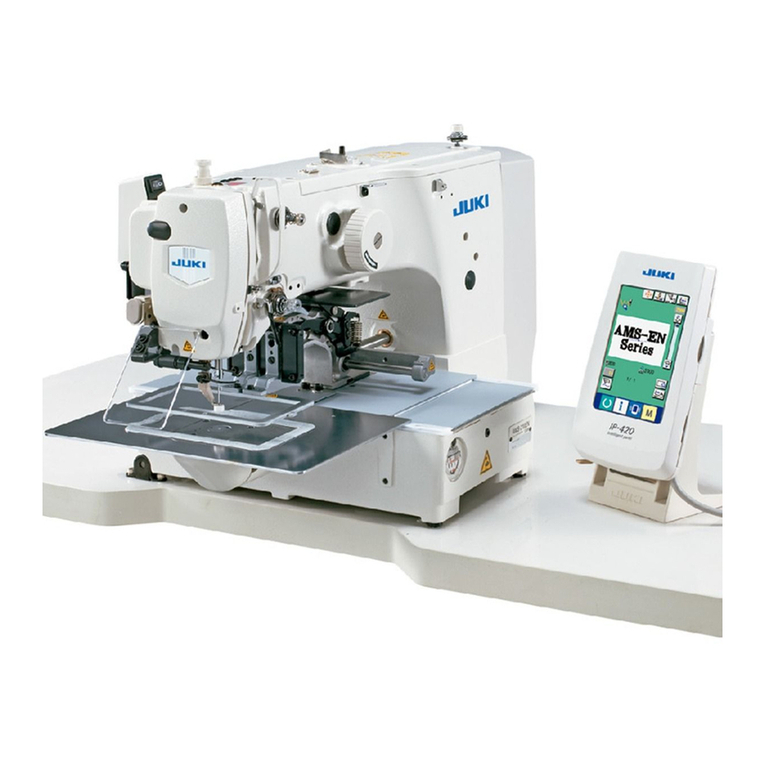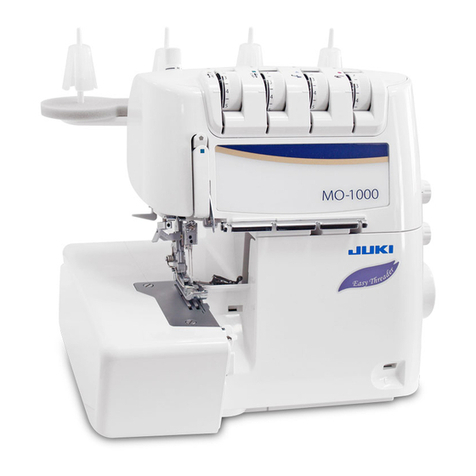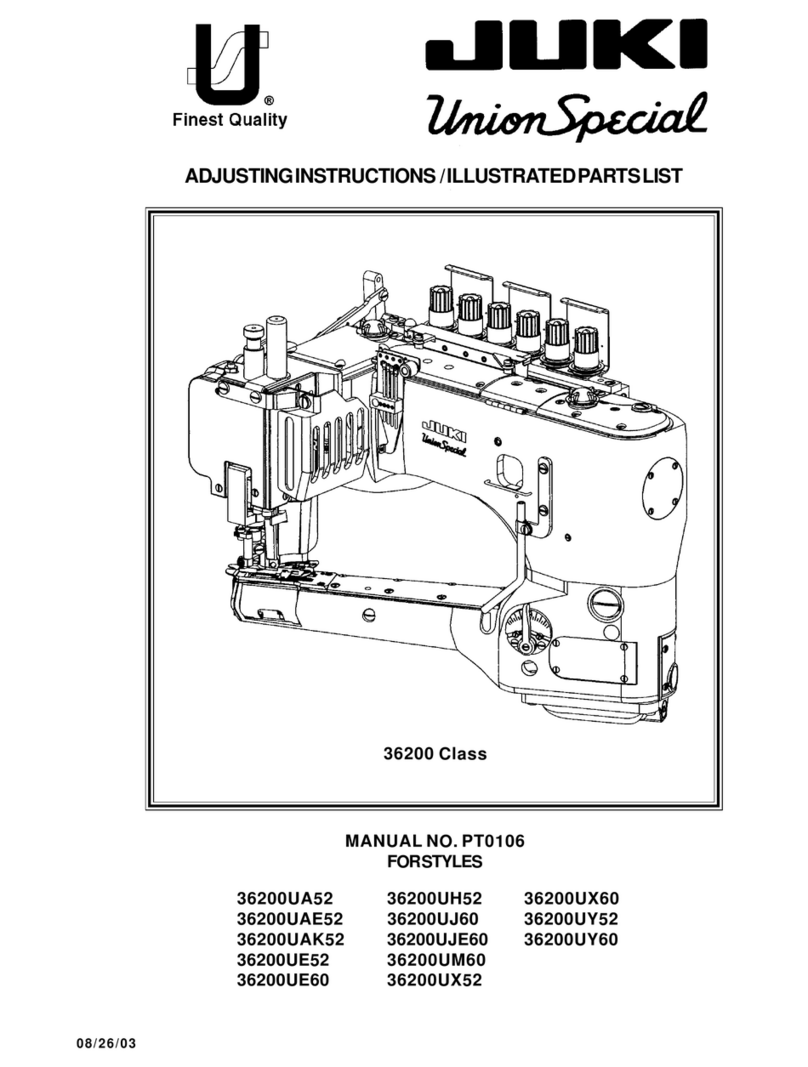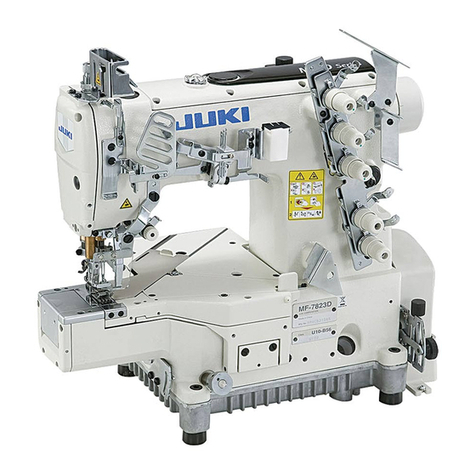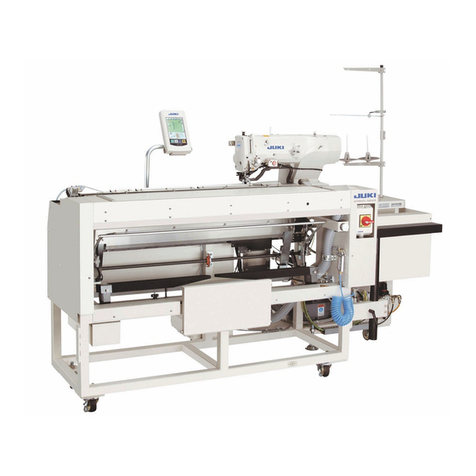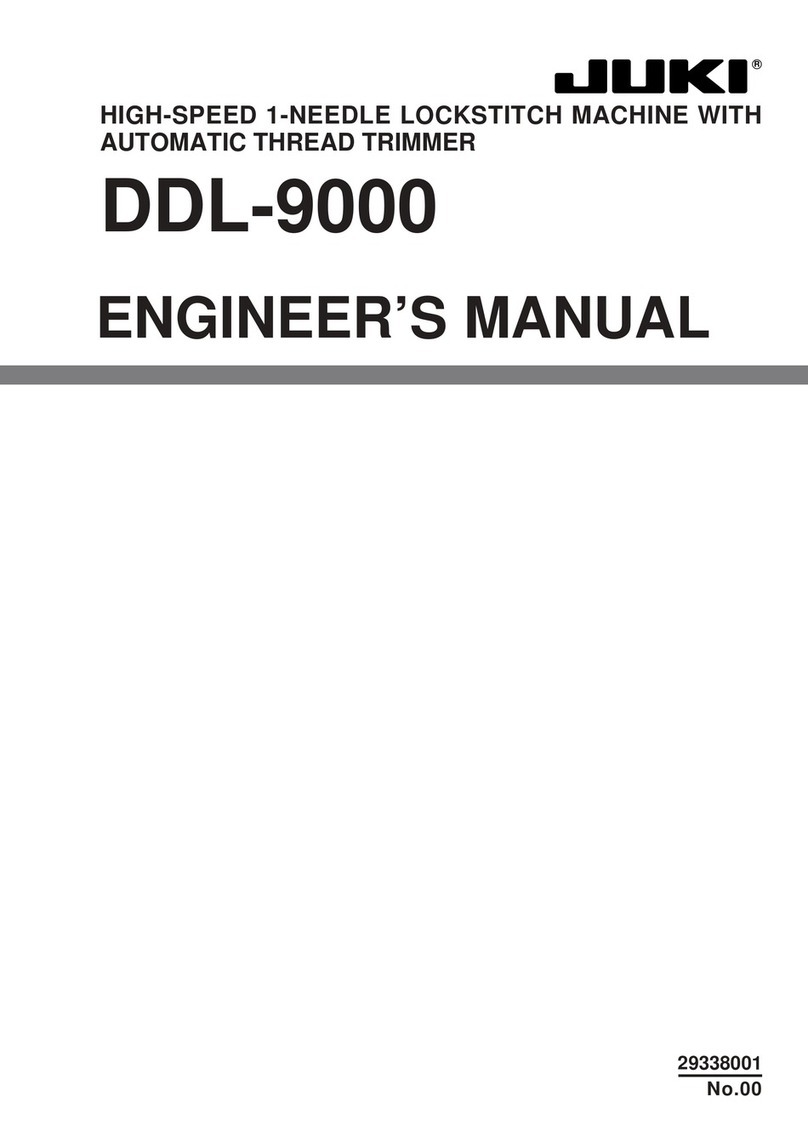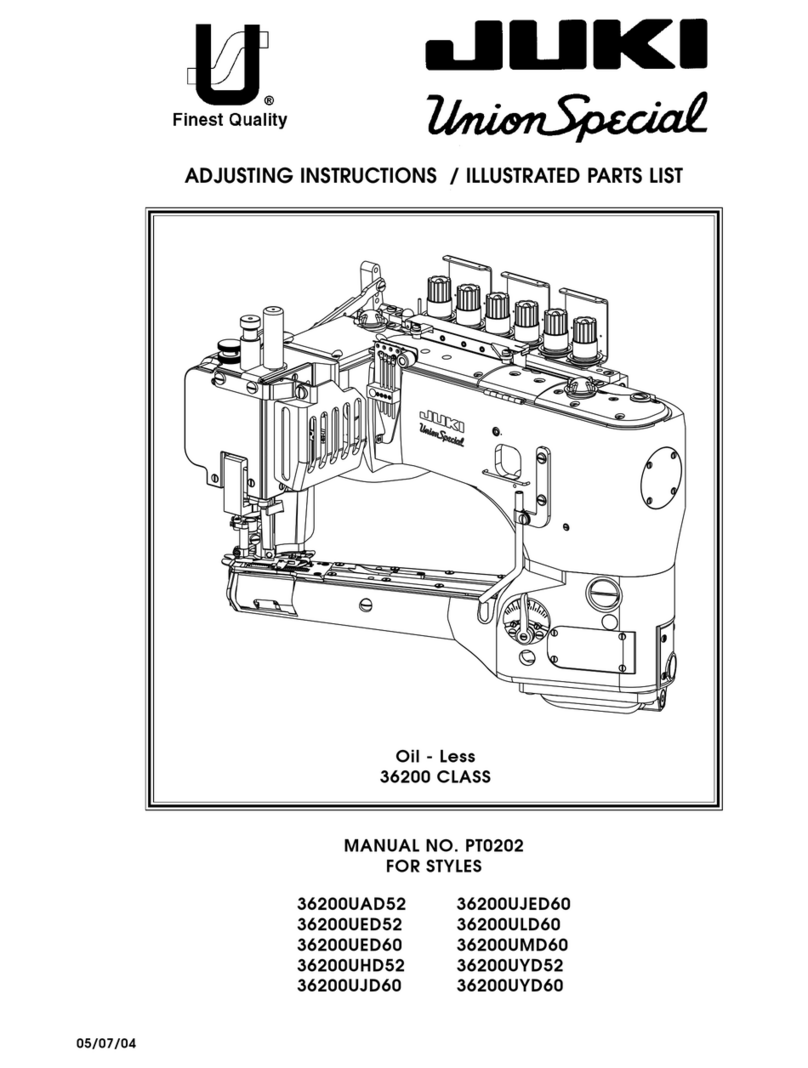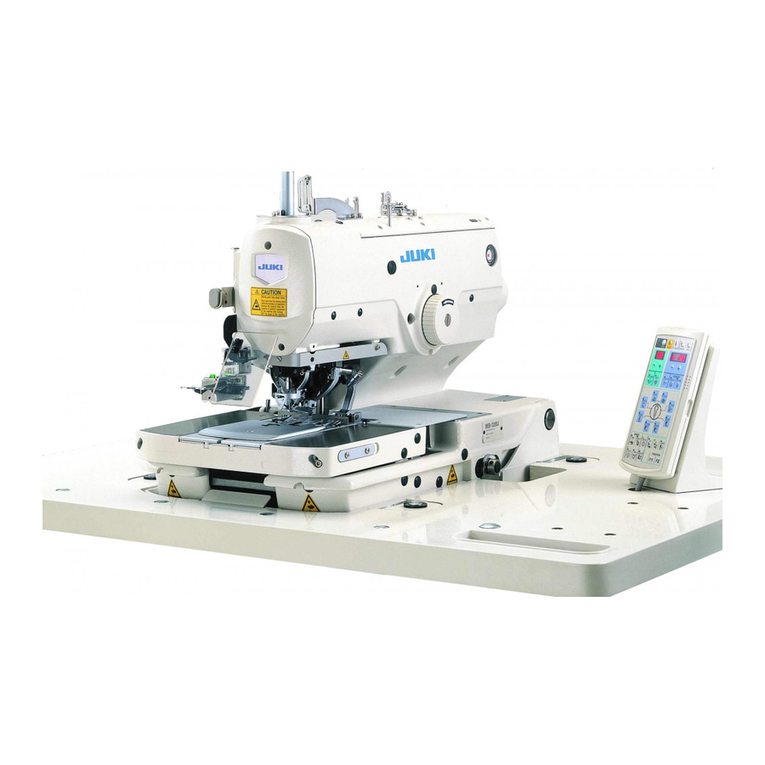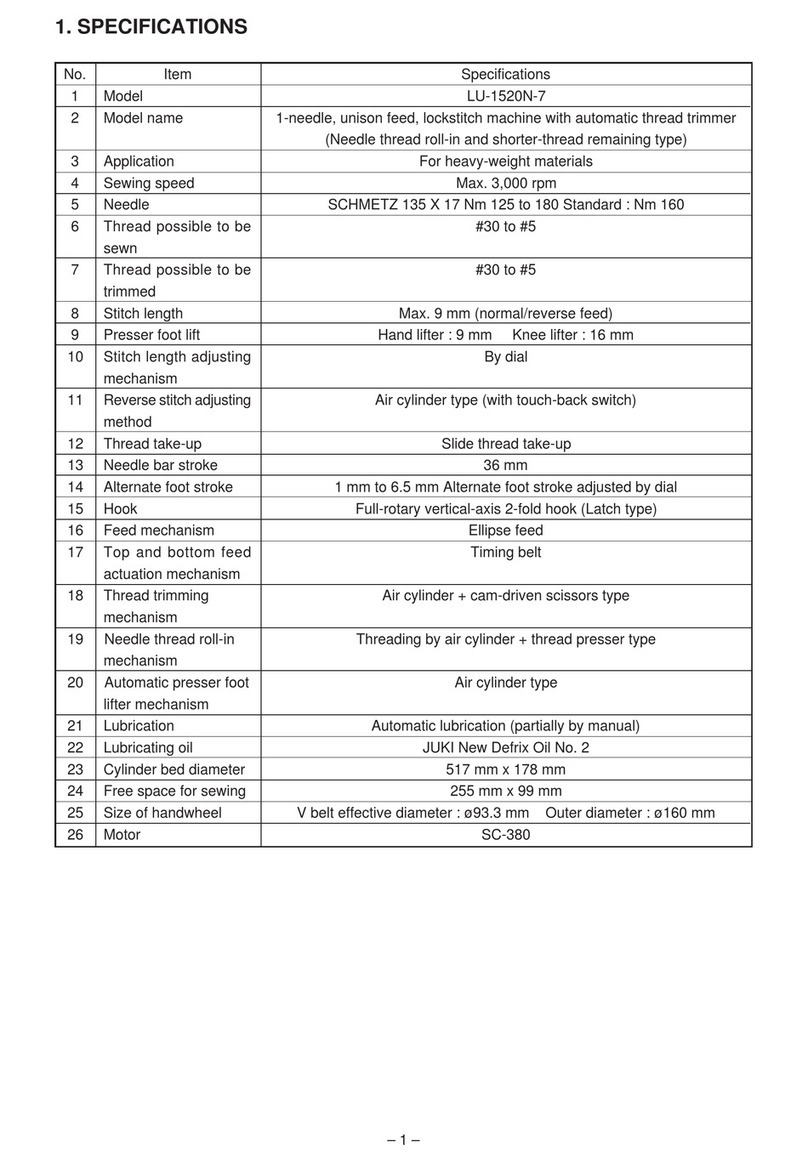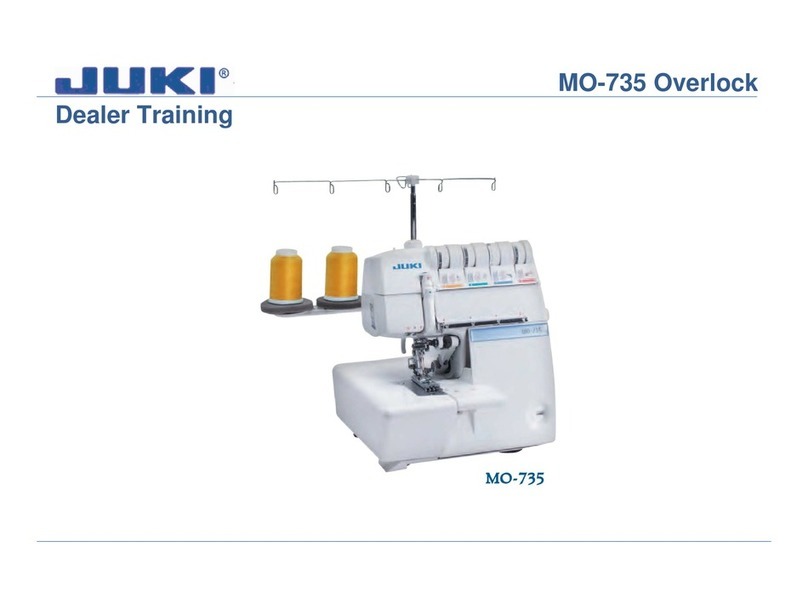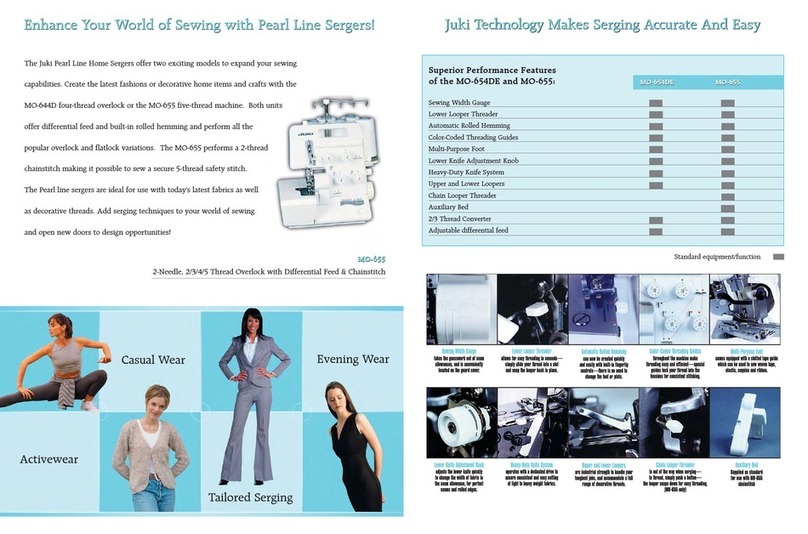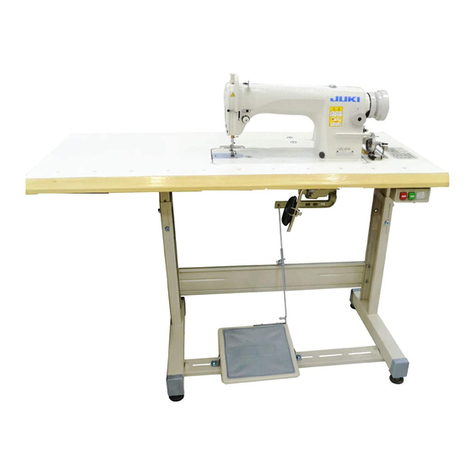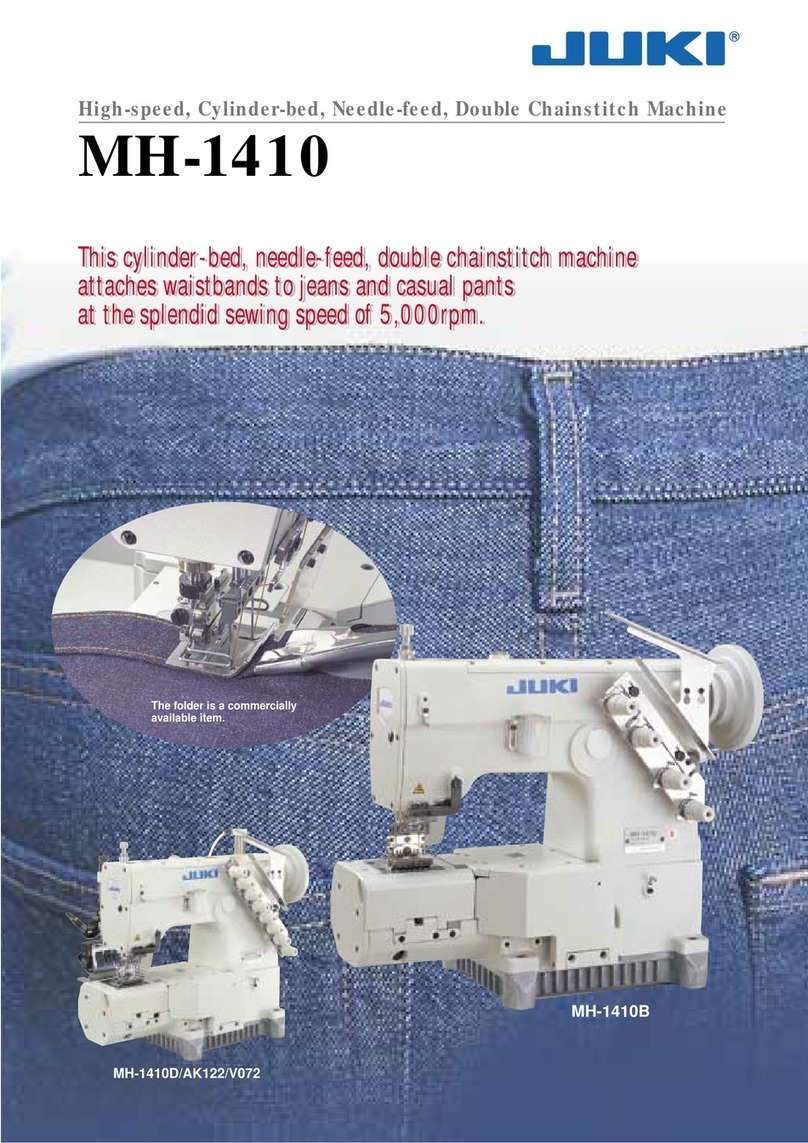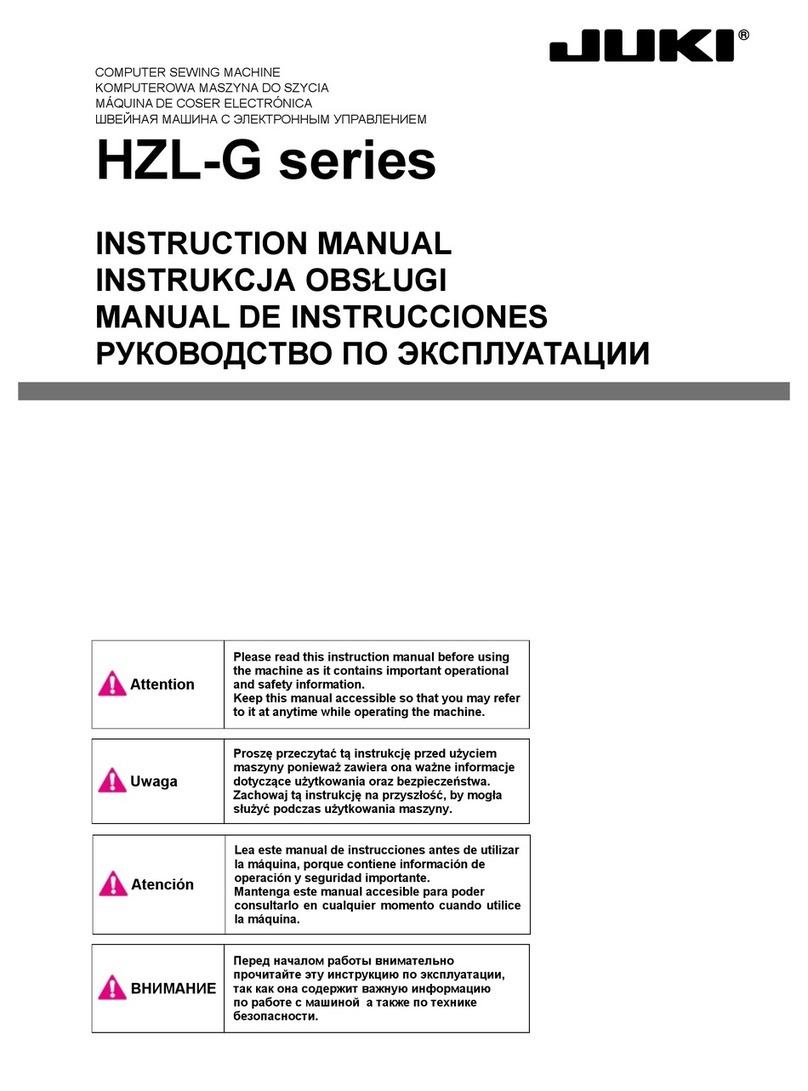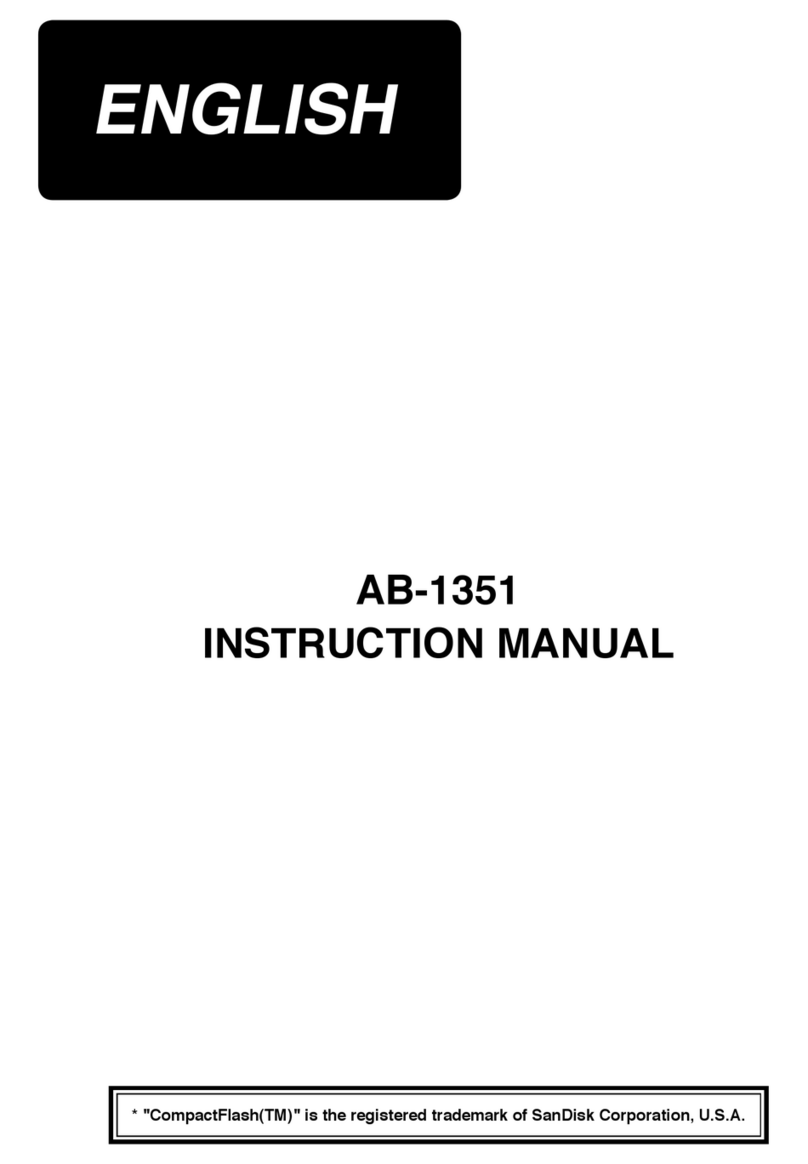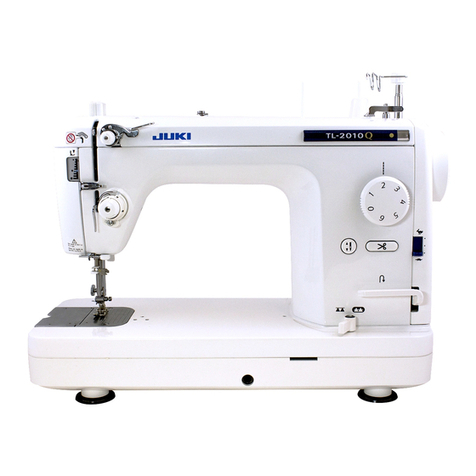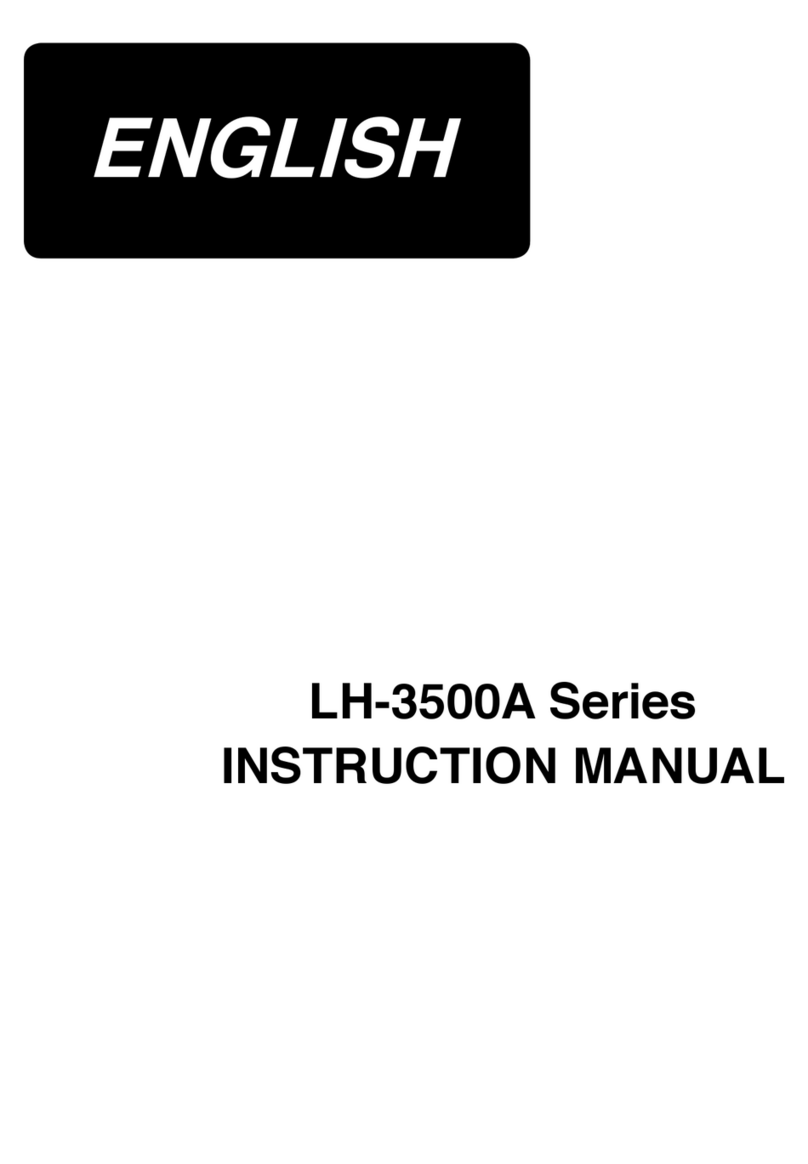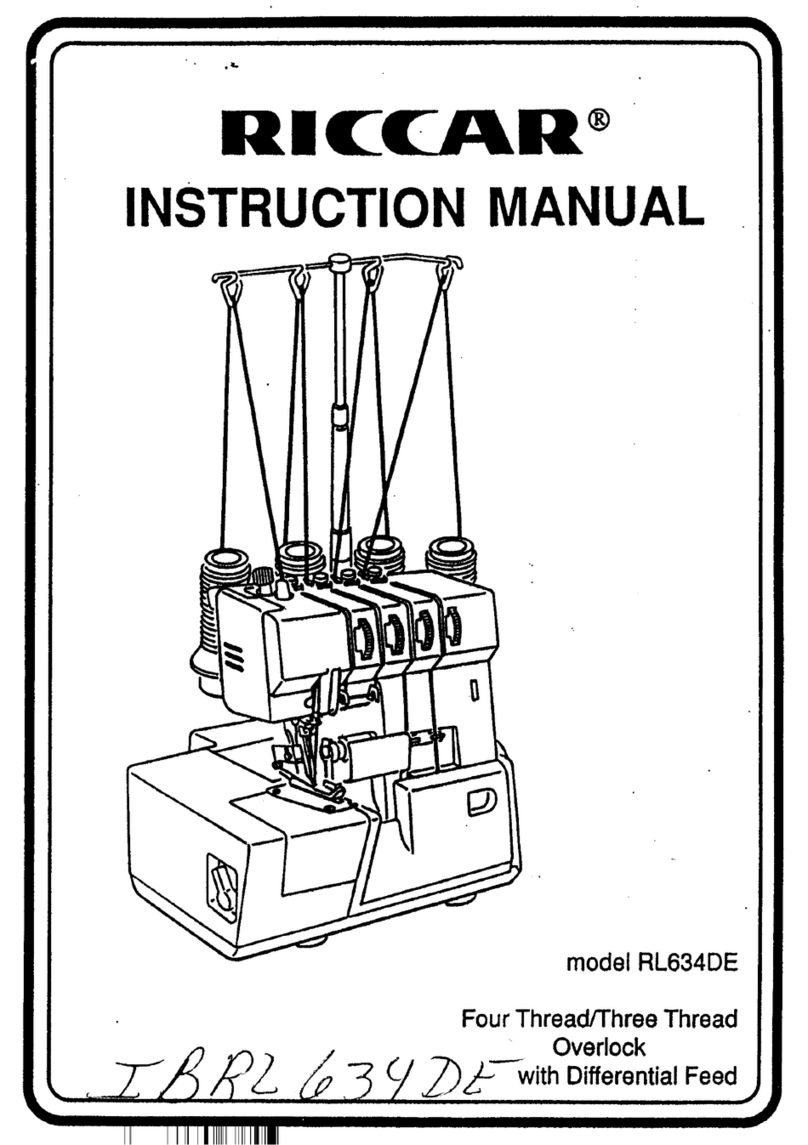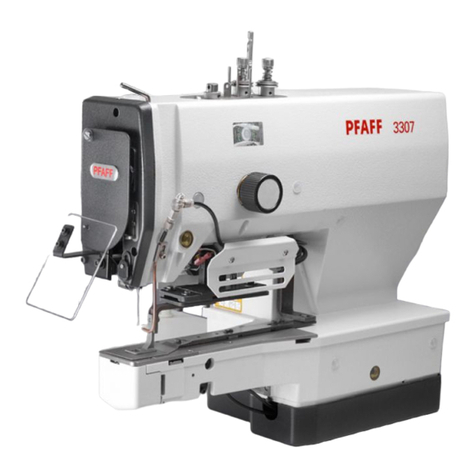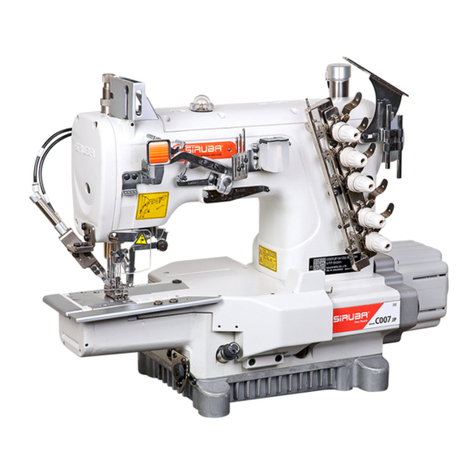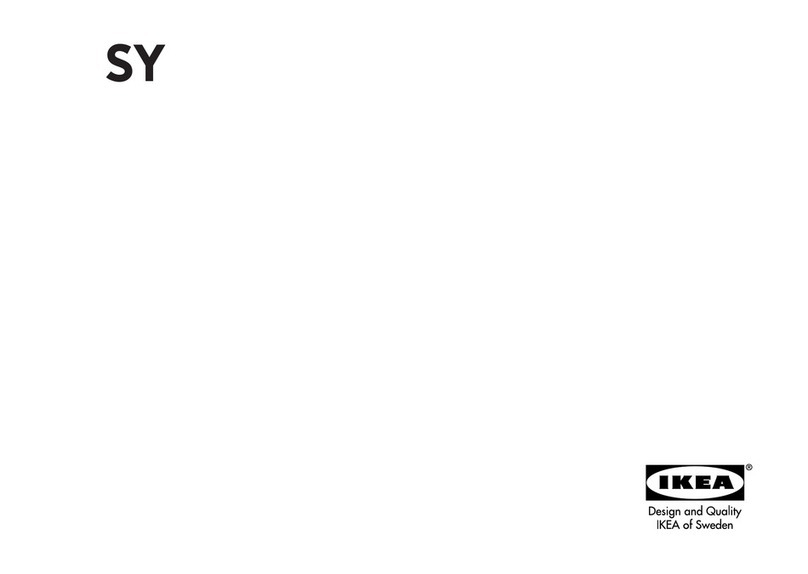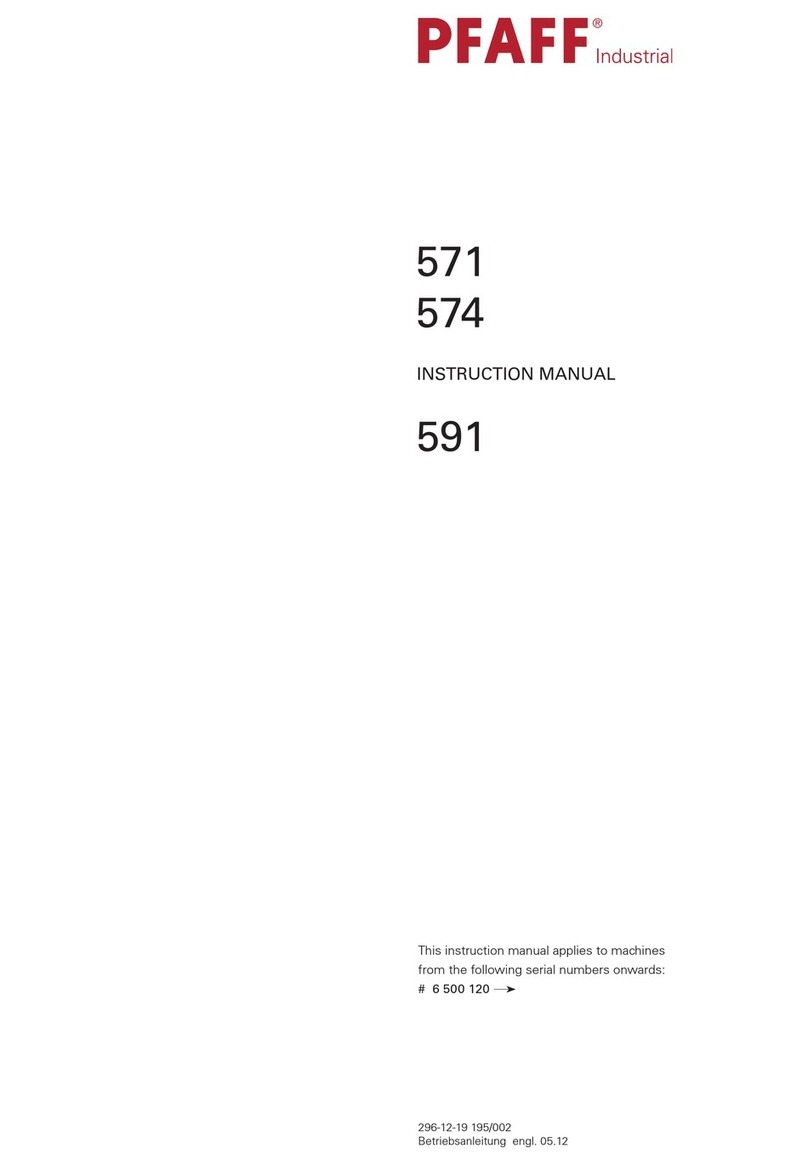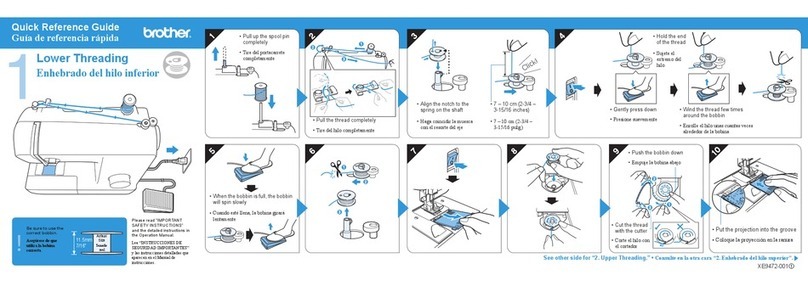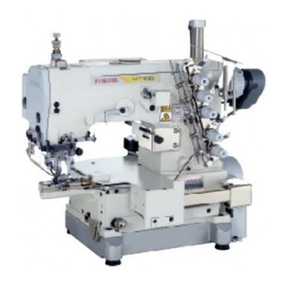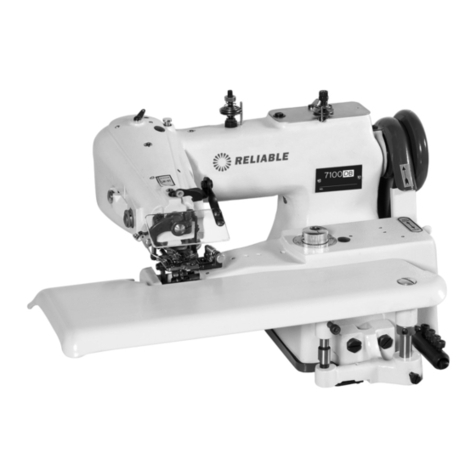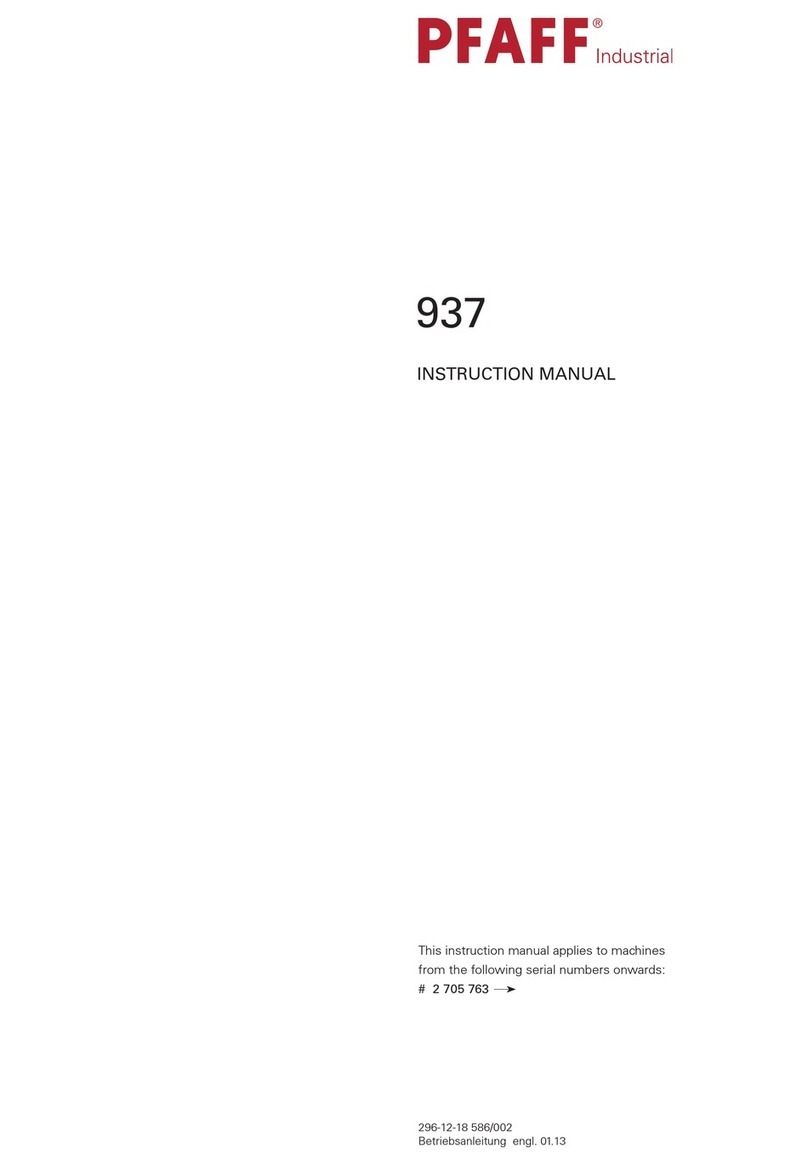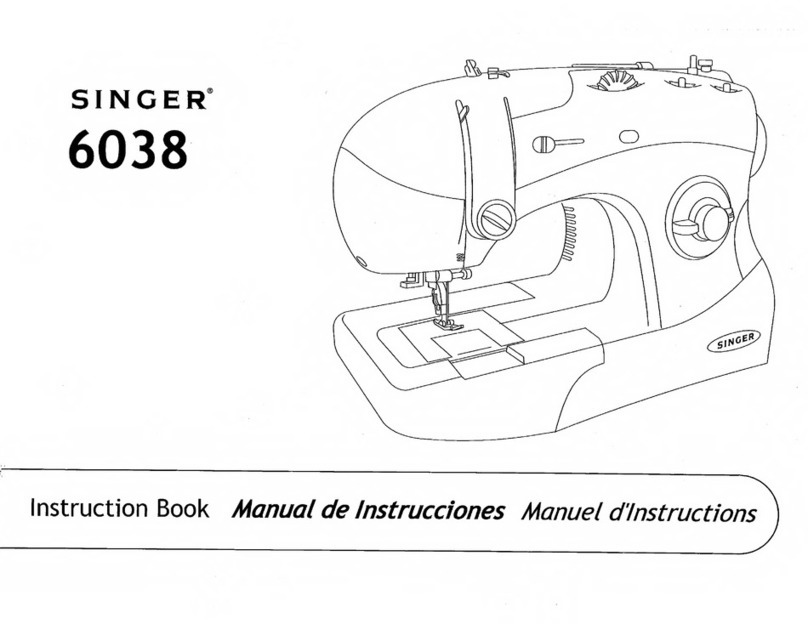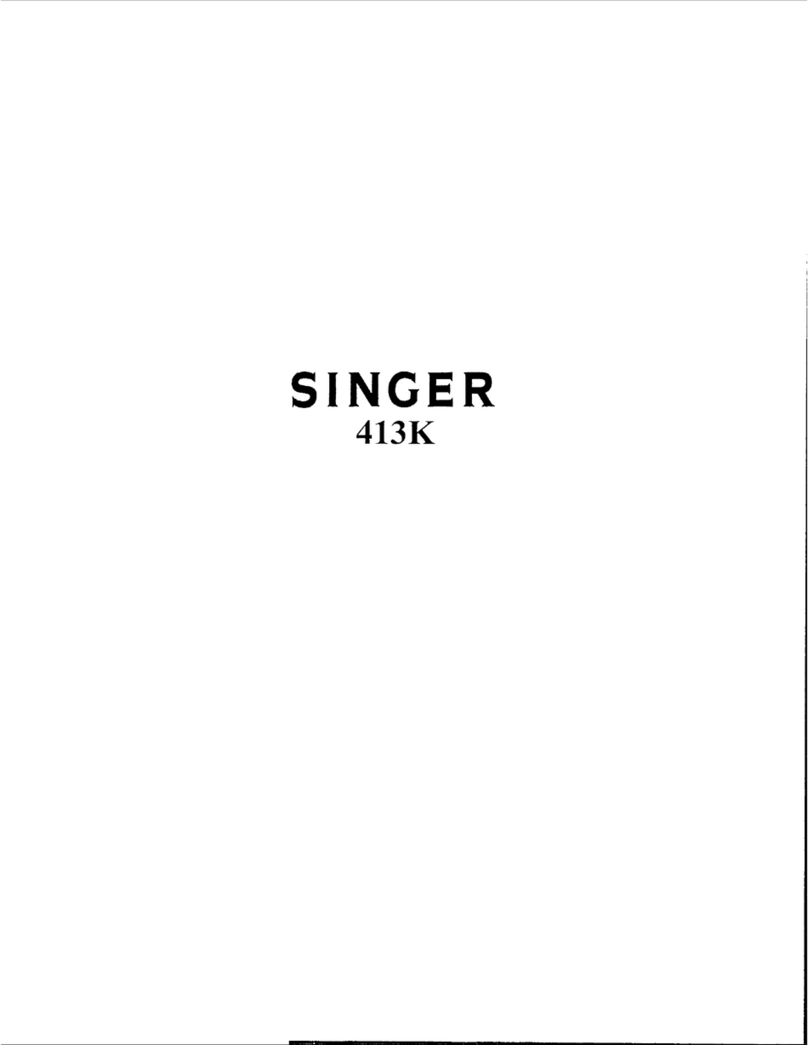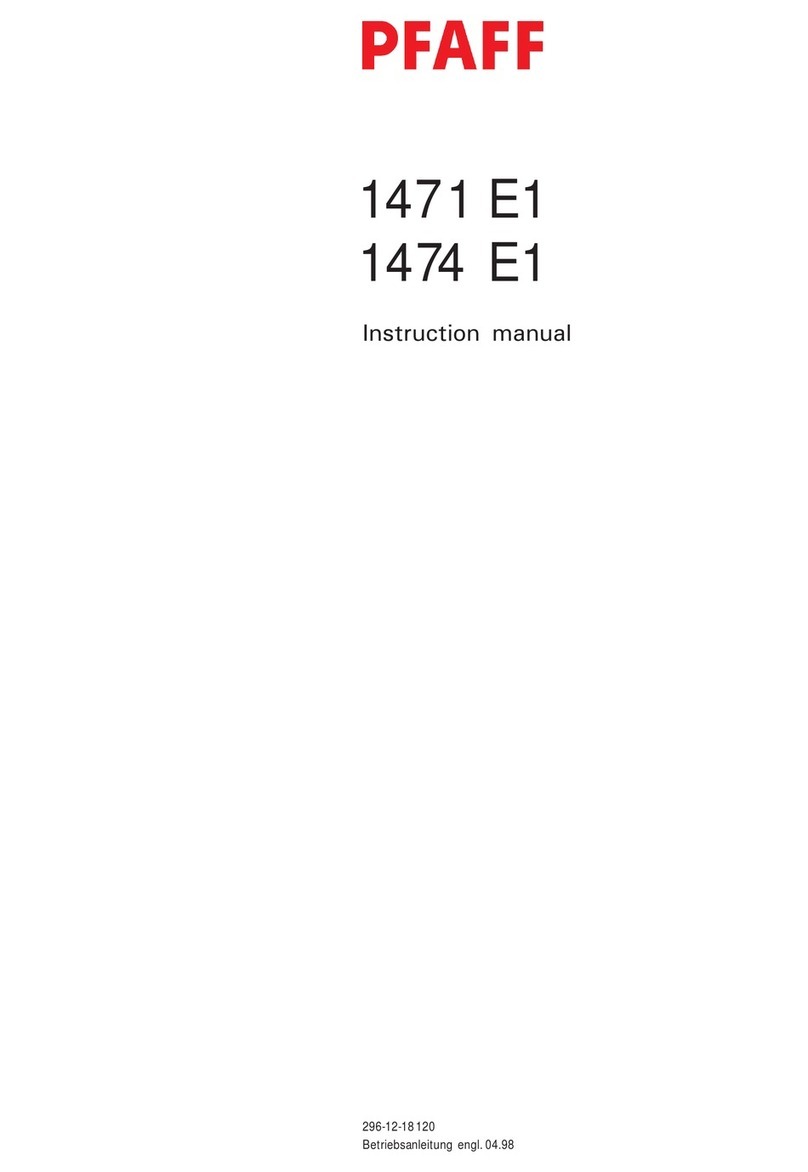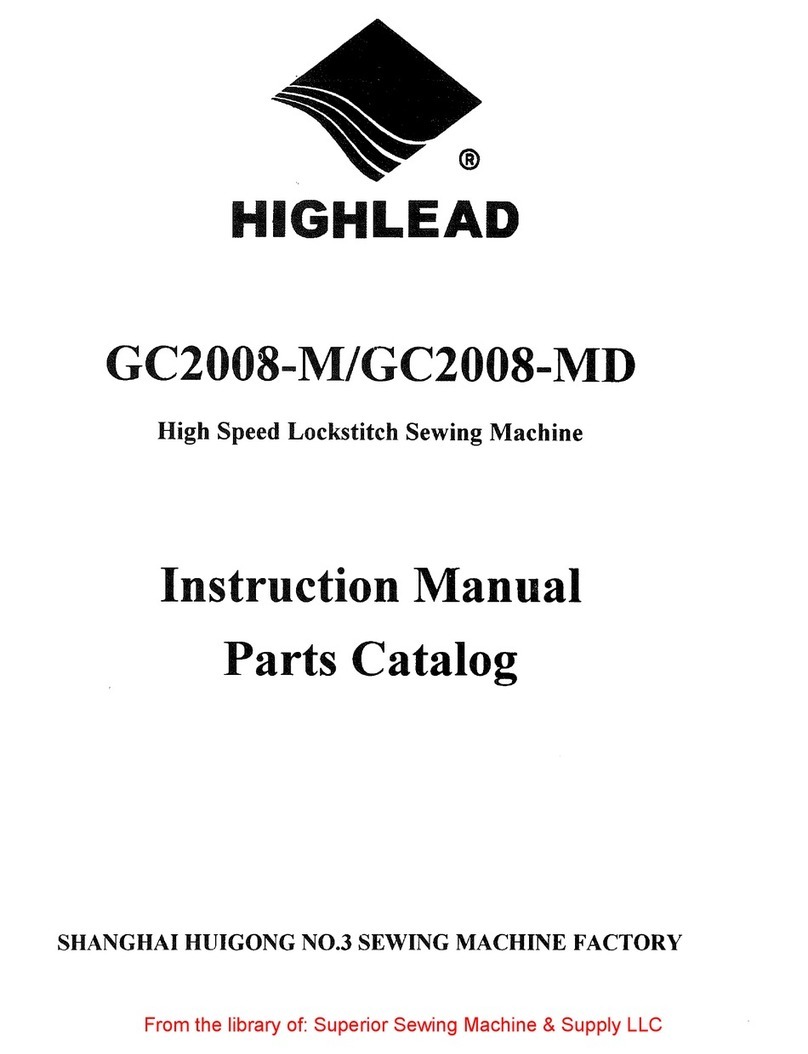−7−
Adjustment Procedures Results of Improper Adjustment
Adjustment Procedures Results of Improper Adjustment
1) Set the feed amount to 2.5mm. (2 mm at the time of delivery)
Note, however, that the feed amount has to be set to “0” mm only for
LZ-2290SU and LZ-2290DU.
2) Adjusting the height of the feed dog
Loosen screw 1and adjust the height of the feed dog by turning feed
driving link shaft 2.
3) Adjusting the inclination of the feed dog
Loosen screw 3. Put a screwdriver through the hole for the screwdriver
and adjust the inclination of the feed dog by turning the feed rocker
shaft with the screwdriver.
(Caution) 1. If the feed rocker shaft is not pressed in the direction A
(a) during the adjustment procedure, there will be a
play at the feed bar or washer will come off. So, be sure
to adjust the feed dog with the feed rocker shaft pressed
in the direction A (a).
2. Check to be sure that the feed dog is leveled with the
feed amount currently used when the top surface of
the ascending feed dog is flush with the top surface of
the throat plate.
™Perform the adjustment of the
inclination of the feed dog according
to the sewing process.
(Example)
™When the feed force is required in
such a process of tape attaching or
the like :
Adjust so that this side of the feed
dog is raised.
™When using the slippery material in
such a process of attaching a facing
of girdle :
Adjust so that the feed dog should
be leveled.
A. Adjusting procedure by removing the gear box cover
1) Remove the gear box cover. (Refer to the item “4-(1).)
2) Adjust the marker line engraved on the thread take-up to the timing mark G
engraved on the face plate.
3) Set the feed amount to 2.5 mm. However, the feed amount has to be set to
“0” mm only for LZ-2290SU and LZ-2290DU.
4) In the aforementioned state, loosen the setscrew in the hook driving shaft
sprocket and adjust the timing mark engraved on the feed rocker cam to
the timing mark engraved on the feed rocker rod.
(Caution) In this case, the hook timing (thread trimming timing for the
machine equipped with a thread trimmer) changes. Be sure to perform
re-adjustment.)
B. Adjusting procedure with the gear box cover attached (For fine
adjustment)
1) Set the feed amount to 2.5 mm.
* Refer the adjusting procedure for LZ-2290SU and LZ-2290DU to page 11.
2) Adjust the marker line engraved on the thread take-up to the marker line
engraved on the face plate.
3) In the aforementioned state, loosen the setscrew in the hook driving shaft
sprocket. Now, turn the hook driving shaft to adjust so that the feed dog
comes down. Adjust so that the top surface of the feed dog is aligned with
the top surface of the throat plate when the feed dog comes down.
* There is a slight inclination at the feed dog. Adjust the feed dog so that “0”
to 6 teeth come out from the top surface of the throat plate.
(Caution) After the aforementioned adjustment, “hook timing” and
further “thread trimming cam timing” for the machine equipped with a
thread trimmer will change. Be sure to re-adjust them properly.
